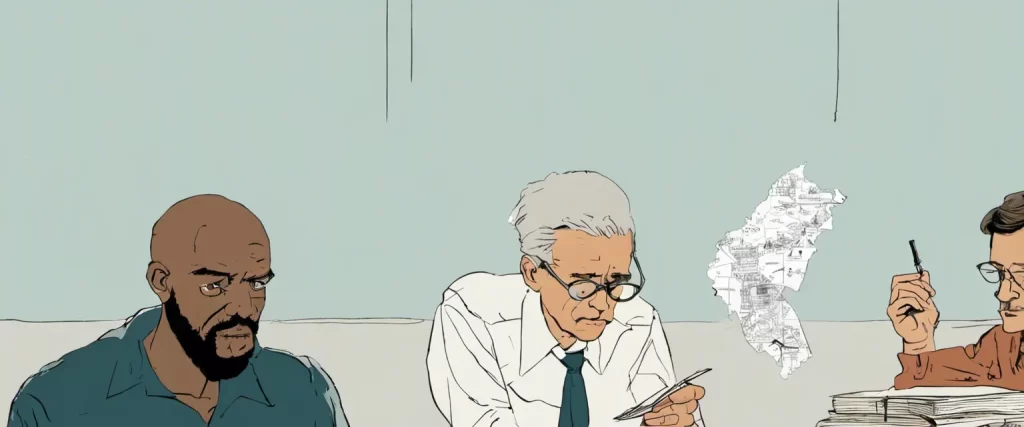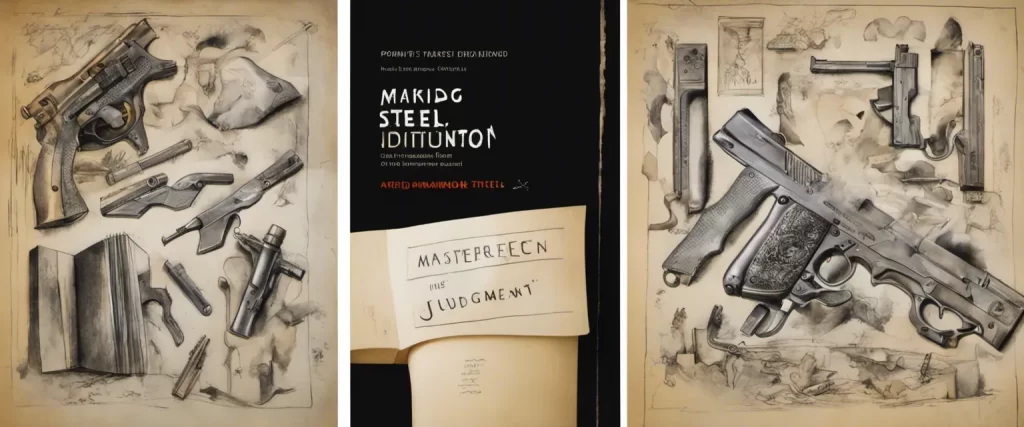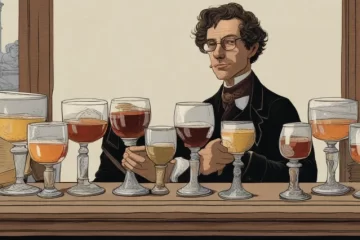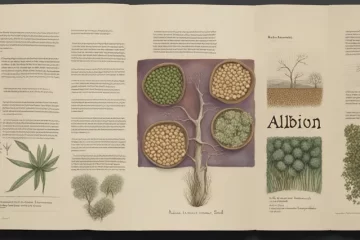Charting the Epic Journey of Human Civilization: Exploring Guns, Germs, and Steel by Jared Diamond

Throughout the annals of history, humanity has marveled at the rise and fall of civilizations, the simultaneous emergence of brilliant innovations and devastating conflicts. From the towering empires of ancient Rome and China to the indigenous cultures of the Americas, the puzzle of human history has long baffled scholars, historians, and ordinary individuals alike. Why did some societies flourish while others perished into oblivion? Forged in the crucible of time, lies a captivating exploration into the factors that shaped human destiny – Jared Diamond’s groundbreaking book, “Guns, Germs, and Steel“. In this illuminating masterpiece, Diamond unravels the intricate web of forces that determined the course of human history, providing unprecedented insight into the diverse paths humans have treaded across the globe. Join us on an enthralling journey as we delve into the captivating study of civilizations, unraveling the extraordinary tale of our collective past, and understanding how the interplay of geographical, environmental, and socio-cultural factors forever changed the course of human existence.
What is Human History
Human history is the recorded past of the human species, documenting significant events, advancements, and cultural developments that have shaped modern civilization. It encompasses various aspects, such as the rise and fall of civilizations, the development of technology, social, political, and economic changes, wars, revolutions, and the evolution of human societies across different regions and time periods. Human history begins with the advent of Homo sapiens, the modern human species, and extends to the present day. It includes the study of historical records, archaeological evidence, and anthropological findings to understand our collective past and how it has influenced our present.
Why is Human History Important to Us?
Human history is important to us for several reasons:
1. Identity and belonging: Studying and understanding our human history helps us develop a sense of identity and belonging. It allows us to understand our roots, cultural heritage, and the struggles and triumphs of our ancestors. It serves as a link between past, present, and future generations, fostering a sense of continuity and connection.
2. Learning from the past: History provides valuable lessons and insights from which we can learn. By examining past events and understanding their causes and consequences, we can make informed decisions and avoid repeating the mistakes of the past. It gives us the opportunity to analyze patterns, evaluate human behavior, and develop critical thinking skills.
3. Cultural appreciation and diversity: History reveals the diversity of human cultures, traditions, and perspectives. It helps us appreciate and understand different ways of life, fostering tolerance, empathy, and respect. By studying history, we can broaden our worldview and develop a more inclusive and multicultural society.
4. Context and understanding: History provides us with the context and understanding necessary to interpret and analyze current events. By knowing the historical context, we can better comprehend the complexities and nuances of contemporary issues, leading to more informed decision-making.
5. Source of inspiration and motivation: Studying human history can inspire us with stories of courage, resilience, and achievement. By learning about past individuals and civilizations, we can be motivated to overcome challenges and strive for progress. History can serve as a source of inspiration for personal growth, societal advancements, and the pursuit of a better future.
In summary, human history is important to us because it provides us with a sense of identity and belonging, helps us learn from the past, fosters cultural appreciation and diversity, offers context and understanding of current events, and serves as a source of inspiration and motivation.
Unlocking Human History from Guns, Germs, and Steel

Guns, Germs, and Steel Introduction
“Guns, Germs, and Steel” by Jared Diamond is a nonfiction book that examines the factors that have contributed to the unequal distribution of power and wealth across different societies. Diamond’s central argument is that these disparities are not the result of any inherent superiority of specific cultures or peoples, but rather the consequence of differences in geographic luck and environmental conditions.
Diamond argues that the availability of wild plants and animals suitable for domestication played a crucial role in determining which societies would develop agriculture and subsequently achieve technological advancements. He asserts that the emergence of farming allowed societies to produce surplus food, which led to the development of complex societies, the division of labor, and the accumulation of wealth.
In addition to the geographic luck of having access to domesticable plants and animals, Diamond also explores the impact of geographical barriers on human interactions. He explains how physical barriers such as mountains and deserts can limit the spread of ideas, technologies, and diseases, thus affecting the development of societies.
Diamond further discusses the role of epidemic diseases in shaping the course of history, asserting that societies with earlier and more frequent exposure to infectious diseases, like those in Europe and Asia, developed immunity and were able to conquer or colonize other regions. This, in turn, allowed for the spread of their technologies, crops, and culture.
While Diamond acknowledges the influence of external factors, he also examines the significance of internal factors such as political organization, social structures, and technological innovations. However, he emphasizes that these internal factors are often shaped by external forces.
Overall, “Guns, Germs, and Steel” offers a comprehensive analysis of how geography, environmental factors, and historical circumstances have contributed to the uneven distribution of power and resources among different societies. Through a multidisciplinary approach that combines anthropology, biology, history, and sociology, Diamond challenges traditional theories of cultural determinism and offers an alternative perspective on the complex interplay between geography, biology, culture, and history.
Human History Methods
In the book “Guns, Germs, and Steel” by Jared Diamond, several methods for understanding human history are discussed. Some of the key methods and concepts mentioned in the book include:
1. Environmental Determinism: Diamond argues that the geographic and ecological conditions of different regions shaped the development of human societies. Factors such as access to domesticable plants and animals, climate, and terrain influenced the potential for agricultural development and the development of complex societies.
2. Geographic Luck: Diamond suggests that the distribution of wild plant and animal species varied across different regions, leading to advantages or disadvantages for the people living in those areas. This idea of geographic luck highlights how certain regions had a head start in developing agriculture and, eventually, advanced civilizations.
3. Domestication of Plants and Animals: The book examines how the domestication of certain plants and animals led to the rise of sedentary agriculture, surplus food production, and the development of complex societies. Diamond explores which species were domesticated by different societies and how those choices influenced their growth and success.
4. The Role of Germs and Disease: Diamond argues that the exposure to infectious diseases was a crucial factor in shaping the outcome of encounters between different human populations. The spread of germs, resulting in epidemics and high mortality rates, played a significant role in determining the success or failure of different societies during colonization and conquest.
5. Technological Advancements: The book also considers the influence of technology on human history. Diamond explores how the development and dissemination of tools, weapons, and technologies affected warfare, trade, and the rise and fall of civilizations.
6. Long-Term Historical Analysis: Diamond takes a long-term approach to understanding human history, examining developments over thousands of years. He looks at the broader patterns and trends, such as the rise of agriculture, the growth of empires, and the spread of technologies, to explain why some societies were more successful than others.
Overall, Jared Diamond combines various disciplines like geography, biology, anthropology, and history to offer a multidisciplinary approach to understanding human history and the factors that have shaped the world we live in today.
Guns, Germs, and Steel Quotes
Guns, Germs, and Steel quotes as follows:
1. “Much of human history has consisted of unequal conflicts among peoples with guns, germs, and steel.”
2. “History followed different courses for different peoples because of differences among peoples’ environments, not because of biological differences among peoples themselves.”
3. “The striking differences in wealth and power that separate different regions of the world today are due primarily to environmental differences.”
4. Intellectual and technological prowess originally arose in the Middle East and then spread to Europe, rather than originating in Europe.
5. “The rise of food production led to populations expanding and allowed the emergence of complex societies with centralized political structures.”
6. “The control over key geographic areas for resources, trade routes, and communication enabled certain societies to develop powerful states.”
7. Social and economic inequality arose with the development of agriculture and the ability to accumulate surplus goods.
8. “The domestication of animals led to the spread of disease among humans, destroying entire populations that lacked immunity.”
9. “The availability of large mammals suitable for domestication played a crucial role in determining which societies developed more advanced societies.”
10. “Cultural factors, such as the development of writing systems, also played a significant role in shaping the unequal distribution of power and development.”

More Books About Guns, Germs, and Steel by Jared Diamond
1. The Art of War” by Sun Tzu
Find yourself captivated by this ancient masterpiece as Sun Tzu unveils his timeless strategies for leadership, warfare, and intuitive decision-making. While addressing the relationship between military tactics and power dynamics, “The Art of War” demands critical engagement with its principles and their enduring relevance.
2. Brave New World” by Aldous Huxley
Embark on a thrilling dystopian journey into a thought-provoking future society where technology, social conditioning, and human nature intertwine. Huxley’s dark masterpiece explores themes of power, conformity, and the consequences of a dehumanized world, challenging readers to question the true nature of society and individuality.
3. The Tipping Point” by Malcolm Gladwell
Step into the fascinating world of social dynamics and the magic of sudden, dramatic changes. Gladwell’s insightful analysis of societal shifts, trends, and epidemics helps us understand how little actions and ideas can culminate in impactful outcomes. Drawing on a wide array of examples, “The Tipping Point” explores the mechanics behind large-scale transformations and the impact of small, seemingly unimportant factors.
4. “The Guns of August” by Barbara W. Tuchman
Delve into the enthralling account of the onset of World War I, exploring the interplay of international politics, military strategy, and the human element that shaped this devastating conflict. Tuchman masterfully paints a vivid and comprehensive picture of the events leading to the Great War, shedding light on the pivotal role timing, decision-making, and societal forces played in shaping history.
5. Sapiens: A Brief History of Humankind” by Yuval Noah Harari
Embark on a breathtaking journey through human history, as Harari presents a thought-provoking narrative about the development and evolution of Homo sapiens. From the cognitive revolution to the impact of agricultural and technological advancements, this book explores the complex interplay of factors that shaped human societies and laid the foundation for the modern world we inhabit.
These diverse books, ranging from ancient military strategies to dystopian futures and historical events, offer a rich selection to further your exploration of the themes introduced in “Guns, Germs, and Steel.” Each work explores different aspects of power dynamics, societal structures, and pivotal events that have shaped human history, offering readers deeper insights and perspectives on the complexities of our world.



6 Comments
Harnessing the Potential of Technology: Discover Windfall by McKenzie Funk - singleread.com · 12/07/2023 at 16:11
[…] breaking down geographical barriers. It has facilitated international trade, collaborations, and cultural exchange, promoting unity and understanding among diverse […]
Jerusalem's Local Culture: The Biography · 12/07/2023 at 17:28
[…] communities. It allows us to appreciate the beauty and uniqueness of each culture and promotes cultural exchange and […]
Salt: A Captivating Journey into Food Culture · 12/25/2023 at 17:18
[…] and often used as a form of currency. It played an essential role in establishing trade routes and cultural exchange between […]
Unveiling the Power of Regional Culture in Designing Design by Kenya Hara - singleread.com · 01/10/2024 at 00:03
[…] Cultural exchange and understanding: Regional culture fosters cultural exchange and understanding between different […]
Exploring Regional Culture through 'Watching the English' - singleread.com · 01/16/2024 at 00:04
[…] Cultural exchange and understanding: Regional culture allows for cultural exchange and understanding between […]
Exploring Regional Culture and Entrepreneurial Success: Start-up Nation Book Review - singleread.com · 01/19/2024 at 00:03
[…] Cultural exchange and learning: Regional culture allows for cultural exchange and learning between different regions […]